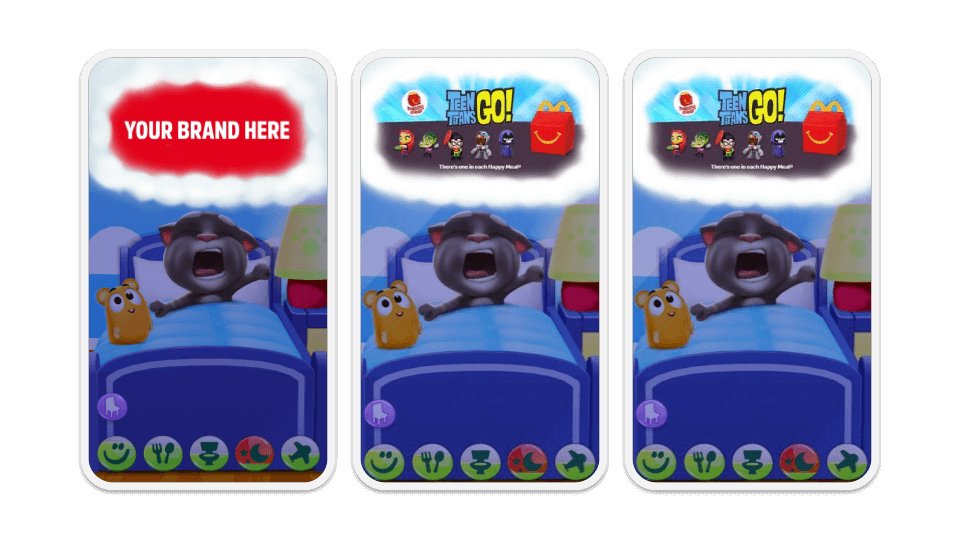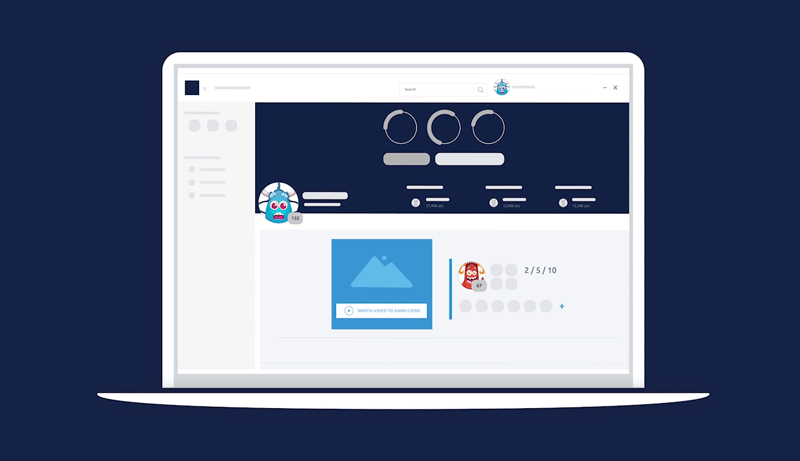6 Game Monetization Models
July 12, 2024
Editorial Policy
All of our content is generated by subject matter experts with years of ad tech experience and structured by writers and educators for ease of use and digestibility. Learn more about our rigorous interview, content production and review process here.

Key Points
- There are multiple ways to monetize a mobile game, desktop app, or web-based game. Popular options include in-app purchases, premium paid downloads, in-game advertising, ongoing mobile game subscriptions, and sponsorships.
- Blending multiple game monetization models is one of the most effective ways to generate revenue from your game.
- Playwire's RAMP® Platform is powered by proprietary Revenue Intelligence® technology, continuously improving your in-game monetization strategy and increasing your ad revenue generation.
Game monetization is the process game developers use to generate revenue from their game. Once upon a time, the only way to monetize a game was to sell a hard copy in a store and hope users shelled out their hard-earned cash to buy it. Now, anyone can publish their game online. As a result, the gaming market has exploded, and so too has the number of video game monetization models developers can use.
So, how do you effectively earn revenue from your game without disrupting the gaming experience? Do you charge players to pay for your game per download? Or make them pay a monthly subscription? Or do you make your app completely free to play but show advertisements to earn revenue?
We're here to make sense of the most popular game monetization methods: the pros, the cons, and what you might not know about making them work for you.
Game Monetization Guide: Monetizing with In-Game Advertising
Model 1: In-Game Purchases
In-game purchases allow players to download and play their game for free while charging for additional, optional game content or features. These might be one-time purchases, such as new game characters skins or level packs, or recurring gaming subscriptions that unlock premium features or provide access to exclusive content.
The in-app purchase model lets publishers generate significant revenue from a wider range of players, including those who may not be willing to pay for a game upfront. It also allows mobile game developers to offer a more diverse range of content and experiences, giving players more reasons to keep coming back.
As for the types of purchases you can offer players, there are a few proven options.
Consumables
Consumables are in-game items that are used and depleted over the course of the game, often items that are also available for free in the game environment. These can include extra lives, ammunition for an in-game weapon, or food the character eats to replenish their health.
Developers benefit from consumables as an in-app purchase because once they use up what they have, players are encouraged to purchase more. That means ongoing income from each player.
Exclusives
Where consumable rewards give players more of something they can already get in-game, exclusives are purchases they won't get anywhere else. They might include an exclusive level, a special item for their character, or some kind of upgrade to the overall gaming experience.
Cosmetics
Cosmetic upgrades have become one of the most popular forms of game monetization. Some of the most successful games of the last decade owe nearly all of their profits to players purchasing skins, hats, costumes, and other in-game items.
Cosmetic upgrades also offer the chance for sponsored brand integrations.
We'll talk about blending monetization models later on.
Model 2: In-Game Advertising
In-game advertising allows brands to display ads to players within the game environment. In-game ads can be an effective way to reach gamers, as they are often highly engaged with the game content. Game environments also provide a unique opportunity for brands to align their products with a gaming lifestyle.
What does in-game advertising look like? Your ad unit options range from traditional to mind-blowing.
Banner Ads
Banner ads are simple, static ads that display information and images relating to a brand and/or its products. These ads have been around since the early days of the internet.
Banner ads should be placed in strategic locations within the game, such as on the main menu screen or during game pauses so that they don't disrupt gameplay.
Banner ads can also be used with subscription-based game monetization models, where game publishers can offer a discount to players who view the banner ad. This model works well for banner ads that are placed in high-traffic areas within the game.
Interstitial Ads
Interstitial ads are full-screen ads shown to users at natural breaks in gameplay, such as between levels. When integrated properly, they can effectively generate revenue without impacting the user experience too greatly.
The interstitial ad model might mean a simple static ad that the user must close before continuing gameplay or a video ad that the user can choose to watch or skip.
Rewarded Video Ads
In a rewarded video ad, the player is given the option to watch an ad in exchange for some sort of in-game reward. The rewards can be small, such as an extra life or a power-up, or they can be more significant, such as unlocking a new level or character. At Playwire, these are our favorite type of interstitial advertising.
Regardless of the size of the reward, watching an ad is always voluntary; the player can choose to watch the ad or not, with no penalties. That freedom is part of the key to why rewarded ads are so effective. Players only watch them if they want to, so they're not perceived as intrusive or annoying. Advertisers also know that anyone who sees their ad has actively chosen to do so, making them more receptive to their brand messaging.
The result of rewarded video ads is quite simply, more money for publishers.
Playable Ads
There are a few different ways to implement playable ads. One popular method is to allow players to access a limited version of the game for free. This version usually contains the game's tutorial, first level, or opening sequence.
Another common approach is to offer a demo that expires after a certain amount of time or gameplay. Some companies also use video ads that link to a website where the game can be downloaded.
Overall, playable ads are a versatile and highly effective mobile game monetization method. By giving potential customers a taste of what the game has to offer, playable ads can increase conversion rates and attract new players.
Integrated Ads
Integrated ads allow advertiser messages to become part of the gameplay itself, rather than just appearing in menus or transition spaces. And they’re one way Playwire helping both game developers and advertisers push the boundaries of what's possible in advertising.
Think of a racing game in which actual car brands are featured on the vehicles or a cooking game that features brand logos on in-game packaging. These integrated ads aren't just unobtrusive; they can actually enhance the 'realness' of a game experience for players. It's a win-win-win for you, your advertisers, and your users.

-- Article Continues Below --
The Complete Game Monetization Resource Center
Model 3: The Premium Paid Model
The premium paid model is where players pay a one-time fee to access a full game. It’s the most “vintage” approach to game monetization. This game monetization model has been successful for publishers because it allows them to recoup their investment and make a profit from their games.
Unfortunately, there are a few major cons with the premium paid model. One of the biggest problems is that it can be difficult to convince players to pay for a game upfront. Premium games also often have a shorter lifespan than free-to-play games, as player interest will eventually wane if there is no new content being released.
Model 4: The Subscription Model
The subscription model is one where players pay a recurring fee to access the game. It has been gaining popularity in recent years, thanks in part to the success of massively multiplayer games.
Subscriptions have several advantages for both game developers and players. For game publishers, it provides a steadier stream of revenue that can be used to invest in long-term game development and growth. For players, it offers a more all-inclusive gaming experience with regular updates and new content releases.
That said, players may be less likely to try out other games if they have to commit to a monthly fee, and cancellations can impact revenue stability.
Model 5: Sponsorship Model
The sponsorship model for game monetization can take many forms, but the overall approach is that a brand pays a game developer to have their brand featured inside their game. This could be as simple as a prominently displayed logo in the game’s menus and transitional spaces, or as complex as an entire branded experience built into the world.
This approach to monetization is becoming more popular in gaming each year. Major free-to-play games have created entire events around branded experiences, featuring everything from global corporations to popular celebrities whose avatars perform in-game.
Combining Game Monetization Strategies
The very best way for publishers to supercharge their revenue is by combining monetization strategies in a way that suits their game.
One of the most powerful examples of a hybrid monetization strategy is the use of rewarded video ads. We already mentioned how, on their own, rewarded video ads can introduce advertising revenue into an otherwise free-to-play experience. But rewarded video can be also used even more creatively in a range of monetization strategies.
Here’s an example: Let's say you have a free-to-play game but want to offer exclusive features players can pay for. How do you convince those players to shell out for features they haven't tried? Offer them a sample. Give them the option to watch a short rewarded video ad in exchange for a trial period where they can use some of those custom features. Once they've had a taste, they'll be more confident paying for permanent access.
This is just one way Playwire can help publishers take a hybrid monetization approach to maximize their revenue stream.
Playwire: Masters of Game Monetization
At Playwire, we are masters of each and every game monetization model above, and we're ready to help you incorporate those that are best suited for your business.
You don't have to guess which game monetization model is best for you. You can focus on making an amazing game, and we'll do what we do best: help you earn maximum revenue from that game.
If you're ready to see how Playwire helps you earn more by optimizing your game monetization strategy, contact us today.

-1.png?width=800&height=157&name=1-playwire-logo-primary-2021%20(1)-1.png)






